As a keystone species, vultures are an integral part of healthy ecosystems. The discovery last year of a cinereous vulture colony in the Greater Côa Valley is therefore good news for wild nature and local rewilding efforts.
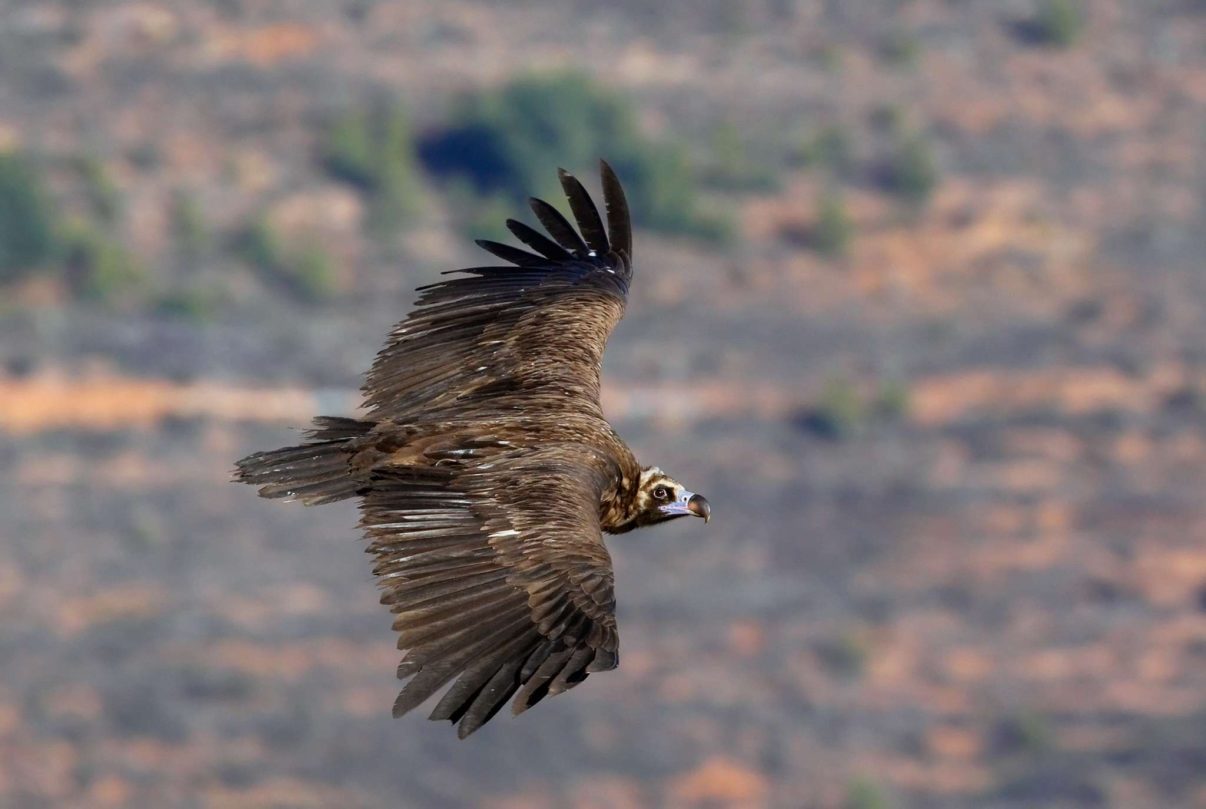
Critical discovery
The presence of thriving vulture populations is a good indication that local nature is healthy, complex, and functioning properly. The discovery last year of a new breeding colony of cinereous (black) vultures within the Greater Côa Valley rewilding landscape in northern Portugal was therefore great news.
The discovery was made after the Rewilding Portugal team tagged a juvenile cinereous vulture and tracked its movement to the Malcata Natural Reserve, finding a total of three nests, as well as one previously known nest discovered by Portugal’s ICNF (Institute for Nature Conservation and Forests). The Rewilding Portugal team are now waiting for approval from the ICNF to continue monitoring.
“The cinereous vulture is still critically endangered in Portugal, with only about 40 pairs remaining,” says Pedro Prata, Rewilding Portugal team leader. “The discovered colony is the third largest in the whole country and we are working hard to protect and support the birds. Hopefully, the colony will grow, because vultures are an essential keystone species.”
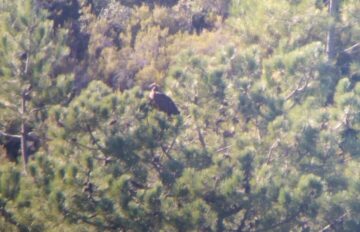
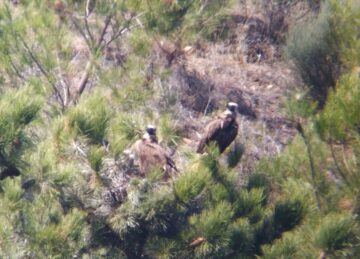
Strengthening the circle
Located between the Douro River and the Malcata mountains, the Greater Côa Valley boasts a unique natural, cultural and historical heritage. Supported by the Endangered Landscapes Programme, rewilding efforts are focused on reinforcing a 120,000-hectare wildlife corridor, supporting wildlife comeback (including the endangered Iberian wolf), and developing the local nature-based economy.
The restoration of natural processes such as herbivory, carnivory and scavenging – which interconnect in the so-called “Circle of Life” – is an essential element of the rewilding process. In northern Portugal, vultures (Egyptian, cinereous and griffon) still rely on a network of artificial feeding stations, which highlights the need to reconnect and strengthen the circle by boosting the availability of wild carrion. The Rewilding Portugal is working to meet this need by reintroducing wild and semi-wild herbivores, and by encouraging farmers to leave the carcasses of domesticated livestock in nature.
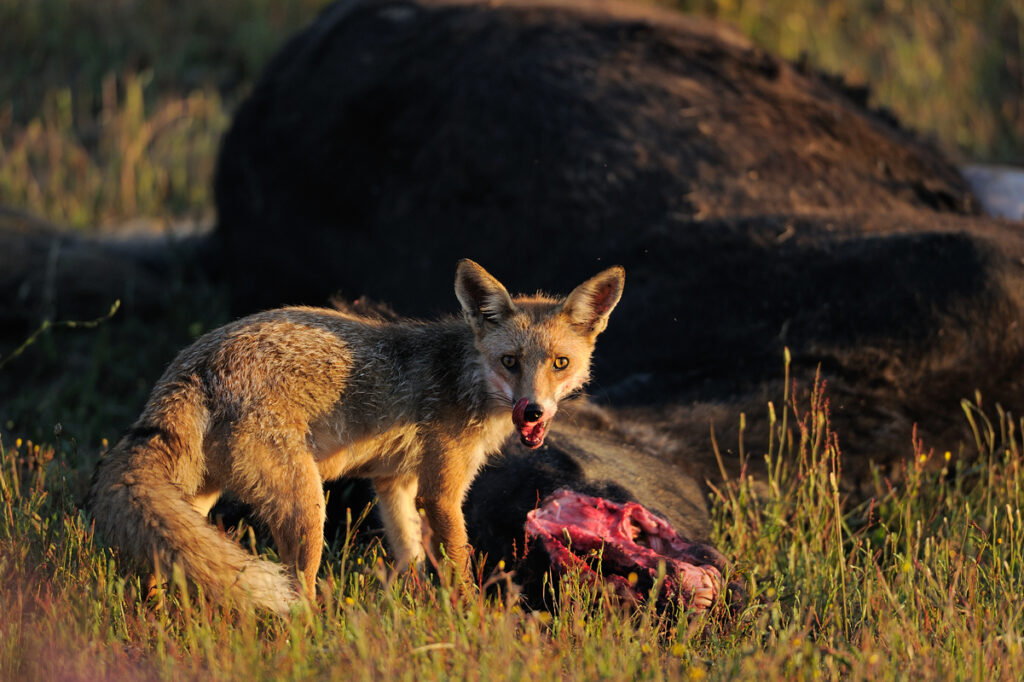
Keeping track
Both griffon vultures and cinereous vultures have been tagged with GPS/GSM transmitters as part of rewilding efforts in the Greater Côa Valley. This allows the Rewilding Portugal team to monitor the behaviour of the birds – to see how they use habitat and food resources, and what impact rewilding measures are having. This work is carried out in collaboration with CIBIO and financed by Arcadia, within the scope of the Endangered Landscapes Programme.
There are many threats to cinereous vultures in Portugal. These include shocks and electrocution by power lines, poisoning, human disturbance, habitat destruction and a lack of food. In addition to increasing the number of wild and semi-wild herbivores in the landscape, the Rewilding Portugal team are working to promote the licensing of private areas for feeding scavenger birds, where Portuguese farmers are legally allowed to leave livestock carcasses.
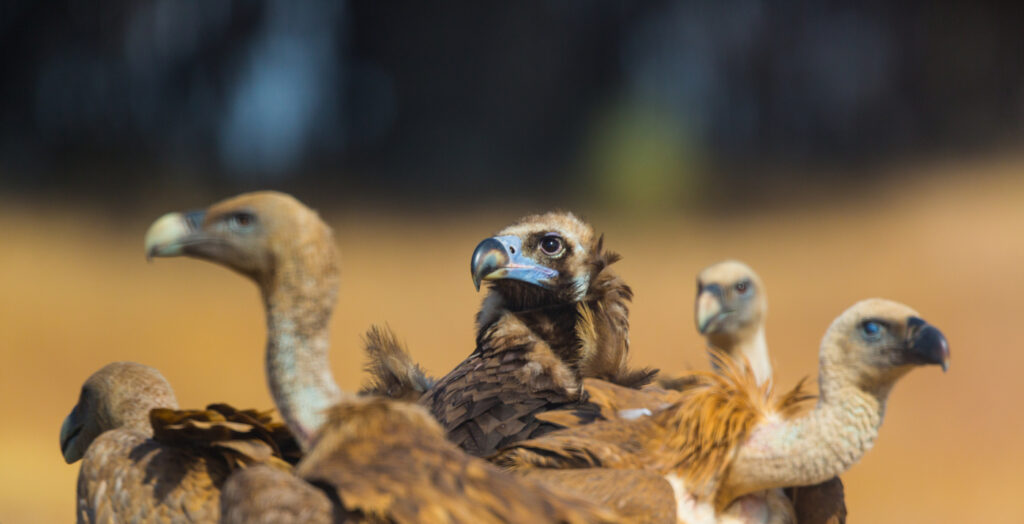
Fantastic flight
The tagging of cinereous vultures by the Rewilding Portugal team not only led to the discovery of a new colony, but a rather surprising journey too. In November, one of the birds was shown to have headed south, flying more than 3000 kilometres between Portugal and Senegal. Covering an average of 200 kilometres a day, the itinerant juvenile crossed the sandy wasteland of the Sahara Desert in just 10 days.
Cinereous vultures are not normally migratory birds, although there have been some cases of juvenile cinereous vultures crossing the Strait of Gibraltar and travelling to sub-Saharan Africa. The bird, named Caravela, spent a total of five months in Africa, crossing five separate countries and mostly basing itself in Senegal and Gambia. Caravela returned to the Iberian Peninsula in April and is now based in southern Spain. The bird has explored parts of Portugal, and also made a one-week trip from southern Spain to Picos de Europa and back, flying well over 1000 kilometres in the process.
Caravela’s exploits highlight the importance of gaining more insight into the lives and behaviour of cinereous vultures, which can lead to better decision-making regarding their protection and population enhancement. Despite their unfavourable conservation status – cinereous vultures are “Critically Endangered” in Portugal and “Nearly Threatened” at a global scale – there is still much to learn about these majestic birds.
